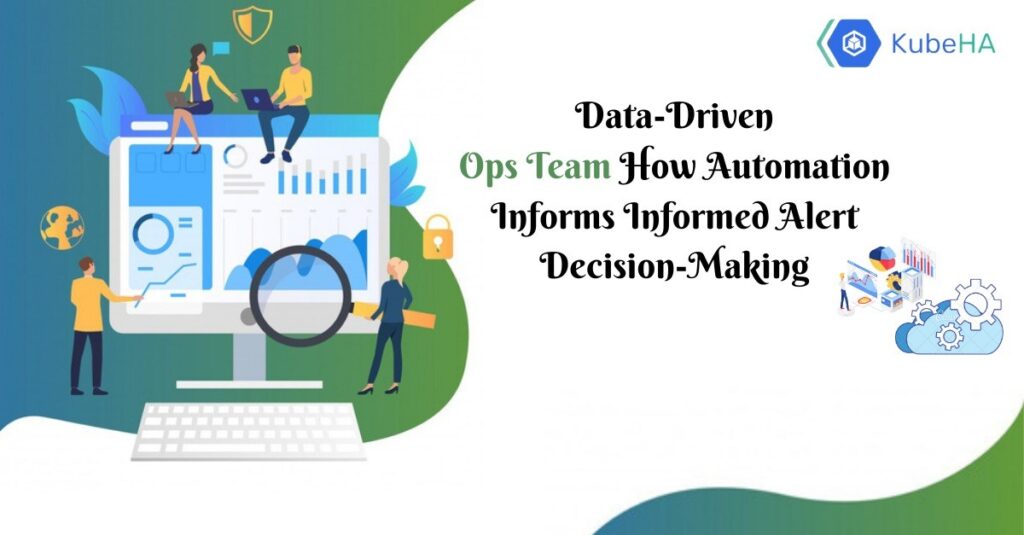
Data-driven operations, powered by robust automation, revolutionize how teams handle alerts and incidents. By integrating various data sources and leveraging intelligent automation tools, operations teams can streamline their workflows, improve response times, and make more informed decisions. Here’s a closer look at how this synergy between data and automation is transforming the operations landscape
The Role of Data-Driven Automation
Enter data-driven automation, a transformative solution that optimizes the operations landscape. By leveraging machine learning, AI, and sophisticated algorithms, automation tools can process vast amounts of data, identify patterns, and predict potential issues. This allows for the categorization and prioritization of alerts based on their severity and impact on the system or business.
1. Smart Alert Triage:
Automation tools excel at triaging alerts, distinguishing between routine operational noise and critical incidents. By analyzing historical data and real-time inputs, these systems can autonomously prioritize alerts, enabling operations teams to focus their attention where it matters most.
2. Predictive Analysis:
One of the significant advantages of data-driven automation is its ability to forecast potential issues before they escalate. By continuously learning from data patterns, these systems can predict anomalies, allowing teams to proactively address underlying problems, minimizing downtime and preventing future disruptions.
3. Contextual Insights:
Automation not only identifies alerts but also provides contextual information, empowering teams with comprehensive insights into the root cause and potential impact of an issue. This contextualization enables faster and more accurate decision-making, reducing the time to resolution.
The Role of Automation in Informed Alert Decision-Making
Automation acts as the backbone of informed alert decision-making, enabling operations teams to:
1. Prioritize Alerts Based on Impact:
By analyzing historical incident data and correlating it with current system behavior, automated systems can assign priority levels to alerts, highlighting issues that pose the most significant risk to the infrastructure or user experience.
2. Reduce Alert Fatigue:
Automation filters out noise and non-critical alerts, preventing alert fatigue among team members. By setting intelligent thresholds and rules, the system distinguishes between minor fluctuations and genuine issues, ensuring that only actionable alerts reach the attention of operators.
3. Facilitate Proactive Remediation:
automation identifies potential issues before they escalate into critical problems. This proactive approach empowers ops teams to take preemptive measures, minimizing downtime and service disruptions.
4. Continuous Improvement through Data Insights:
Data-driven automation systems continuously gather insights from resolved incidents. These insights are used to refine alerting rules and thresholds, creating a feedback loop that enhances the system’s accuracy over time.
Challenges and Considerations
While data-driven automation brings significant advantages to ops teams, there are challenges to address:
- Over-reliance on Automation: Striking a balance between automation and human intervention is crucial. Over-reliance on automated systems without human oversight can lead to oversight of nuanced issues.
- Data Quality and Integrity: Automation heavily relies on data accuracy and quality. Inaccurate or incomplete data can misguide decision-making processes, emphasizing the need for regular data validation and cleansing.
Real-Time Data Collection and Analysis: Data serves as the lifeblood of informed decision-making. Automated systems collect and process vast amounts of real-time data from diverse sources, such as monitoring tools, logs, and performance metrics. This aggregated data is then analyzed to identify patterns, anomalies, and potential issues before they escalate.
Precise Alert Prioritization: Automation filters through the influx of data to prioritize alerts based on predefined criteria and historical incident patterns. By applying machine learning algorithms, systems can learn from past incidents, categorize alerts by severity, and direct attention to the most critical issues, reducing noise and alert fatigue among team members.
Enabling Proactive Responses: Data-driven operations empower teams to adopt a proactive approach. By utilizing predictive analytics, trends, and historical data, automated systems can anticipate potential issues, enabling preemptive actions to prevent disruptions before they occur.
Improved Incident Resolution: Automation assists in incident resolution by providing context-rich data and actionable insights to support decision-making. This helps teams swiftly diagnose and resolve issues, reducing downtime and enhancing system reliability.
Continuous Improvement through Feedback Loops: Leveraging data analytics and automation creates a feedback loop mechanism. By analyzing responses to incidents, teams can fine-tune automation rules, improve alerting thresholds, and refine processes continually.
Enhanced Operational Efficiency: Automation reduces the manual workload on teams, allowing them to focus on higher-value tasks that require human intervention. By automating repetitive and mundane tasks, teams can work more efficiently and allocate resources strategically.
Data-driven operations and automation equips operations teams with the tools needed to navigate the complexities of today’s digital landscape. By harnessing the power of data and intelligent automation, teams can make informed decisions, mitigate risks, and ensure the smooth functioning of critical systems, ultimately driving business success. Follow KubeHA Linkedin Page KubeHA